William Still, the 30-year-old Belgian Manager, was asked to fill in for Óscar García as interim manager and will now be managing Stade de Reims in the French Ligue 1 until the end of this season. From his first five games as manager, he has taken two wins and drawn three — showing early promise as a coach. In this tactical analysis piece, we will break down the coach’s tactics and perform an analysis of his team in every phase of the game.
He was covered heavily in the news for becoming the youngest top-flight manager in Belgium and also became quite popular when he filled in during the absence of Óscar García in a match against PSG last season, which is also known as Messi’s debut game for Les Parisiens. He’s so far managed to gain a point per match score of 1.80, but it’s important to remember that his sample set is very small and hence we’ll not be taking data as a point to validate how good he’s been as a manager, but rather we’ll try to break down the tactics and explain how it helps the team in winning games.
Build-up play
Immediate changes were visible when he took over and didn’t change much of the team’s identity. He continued playing in a 4-2-3-1, which has been successful for them so far. During the build-up from the back, they look to go long from the keeper but, at times, they look to build from the back. When they do this, they tend to form a 4-1-2-3 formation.
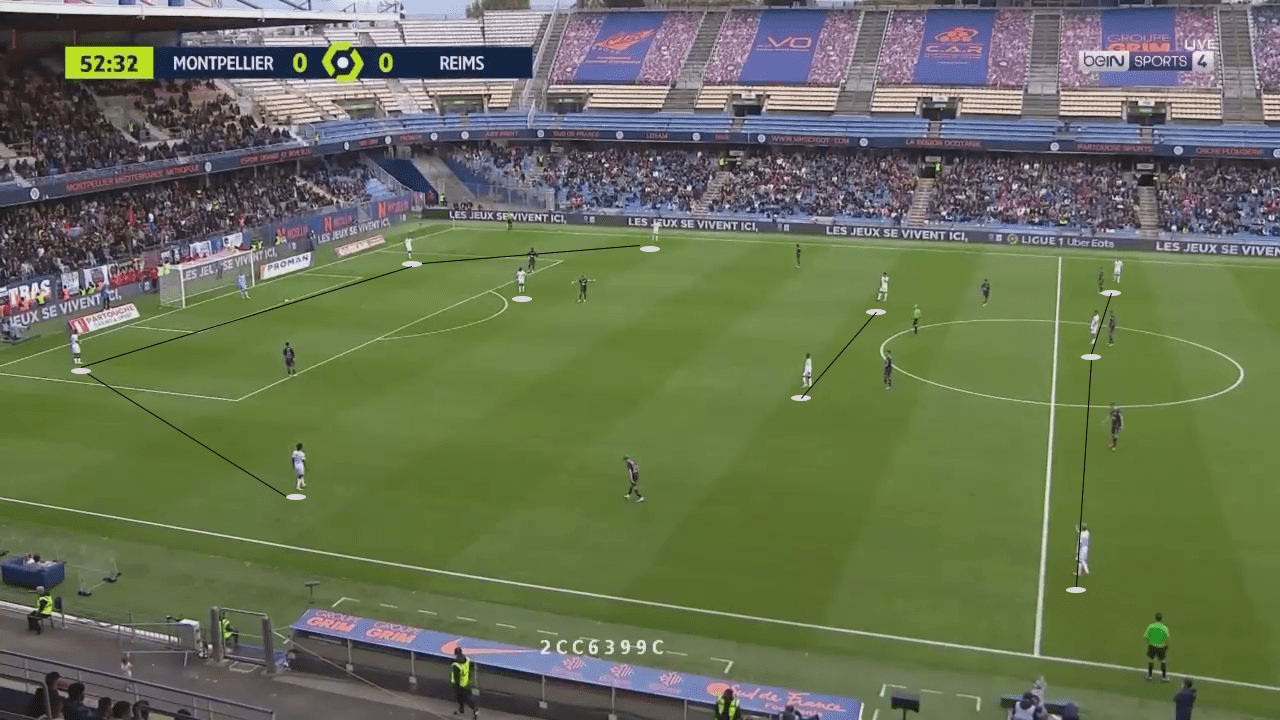
In the match image, we can see they have a single pivot who helps in progressing the ball to the next stage of play. But the key role is played by the two midfielders in the middle. They are responsible for dropping into their respective channels to receive the ball and by doing this, they also drag the player marking with them. As a result, there’s a space created in the middle that the wingers can then utilise.
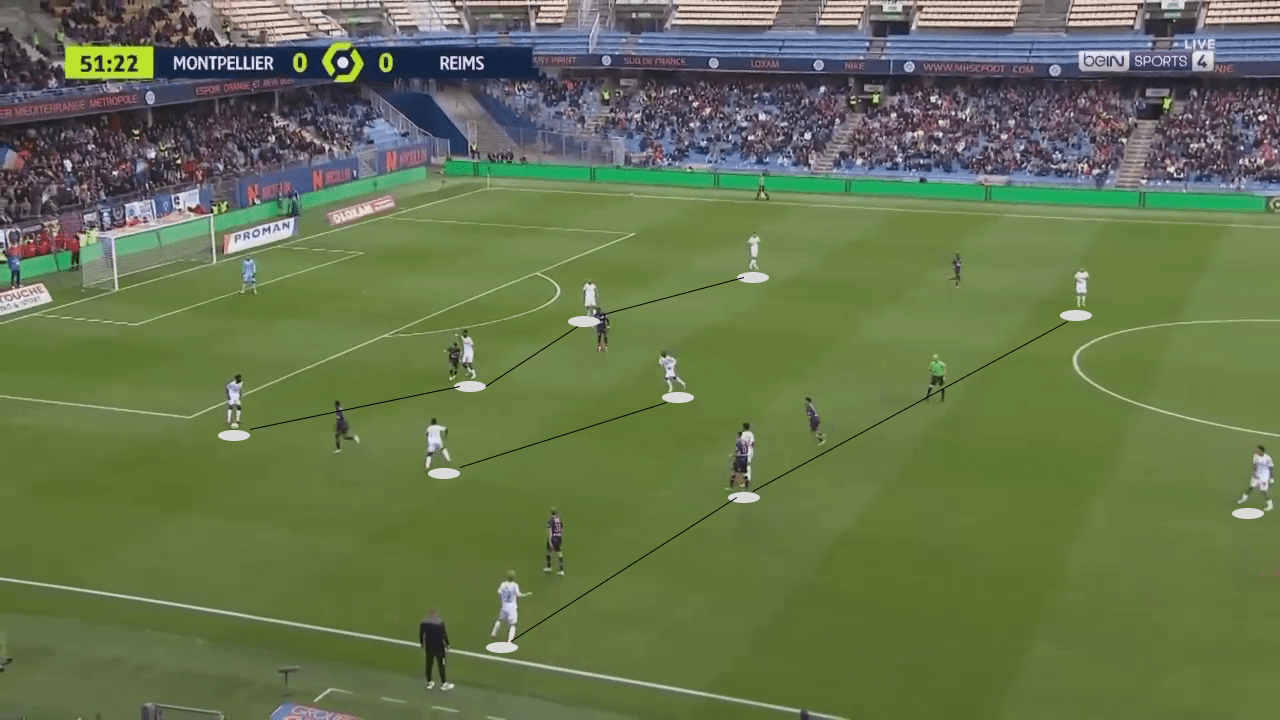
Once they drop in, their structure would look like a 4-2-3-1 as shown in the previous match image. Depending on which side of the pitch they look to progress, the midfielder in that zone drops low to form a double-man pivot in the centre for ball progression.
Upon dragging in opponents, the centre-backs usually prefer to go long to find the striker and avoid going through the middle to reduce the risk of losing possession. But their frequent way of progression is through the flanks.
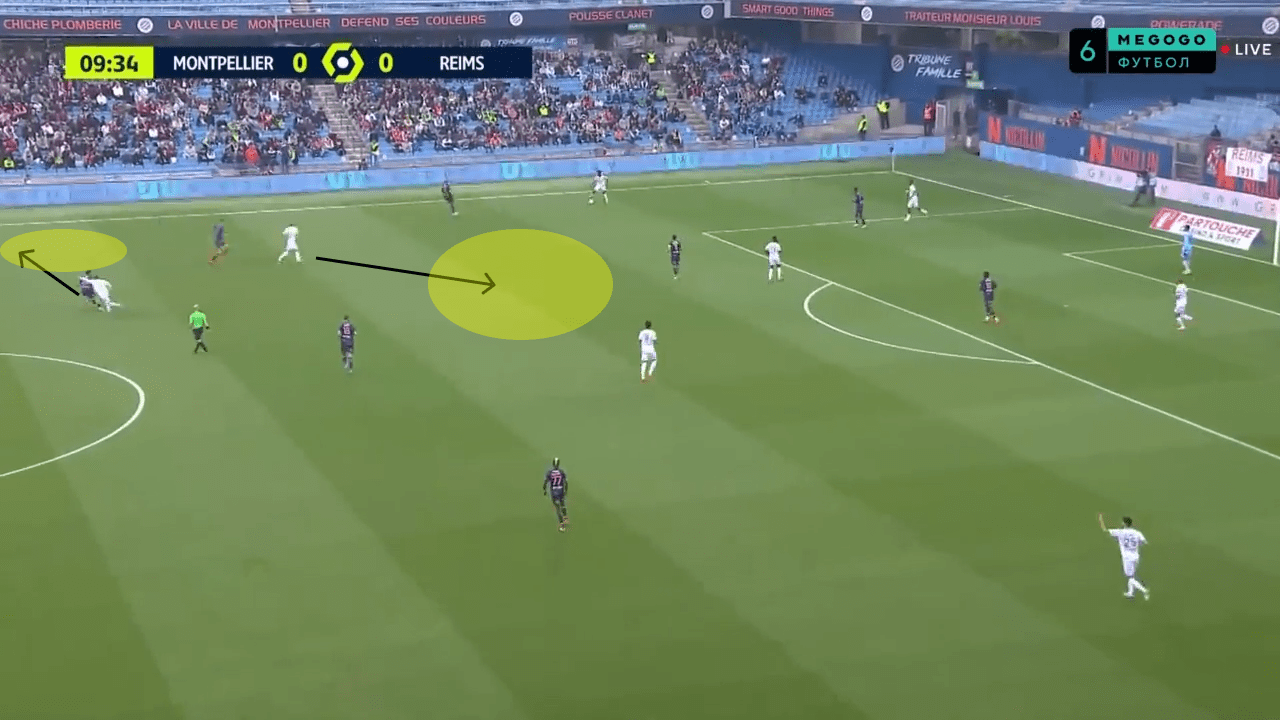
When trying to play through the flanks, which they do quite often, we can see a lot of movement out wide and in the middle to create space. One of the midfielders drops low to receive the ball while the space created behind is used by the attacker. When there’s no pressure from the opponent, they push up and look to progress through the centre into the final third.
Play in the final third
Once into the final third, Still prefers his team to attack the box constantly either from the flanks or through the centre. He also wants his team to switch sides via long balls to constantly move the opponent’s defence and create space.
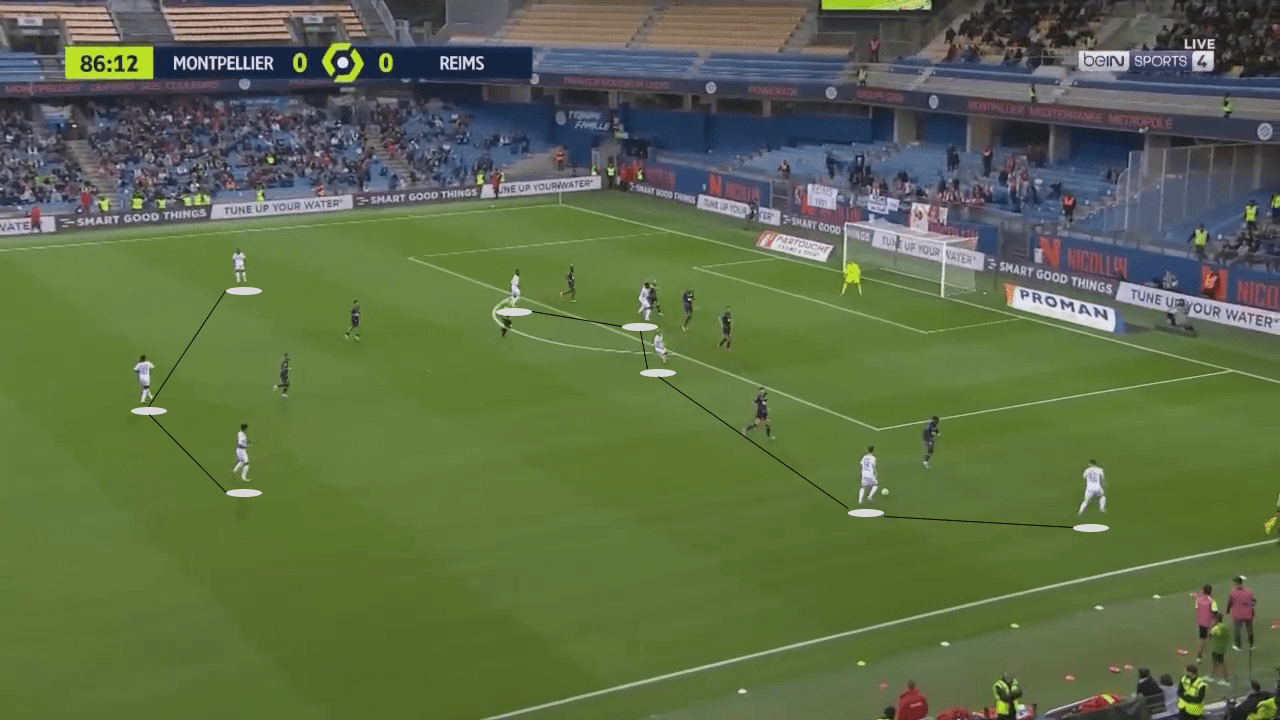
Reims look to push the full-backs high up the pitch, giving the attacking midfielders the flexibility to either cut inside or combine with the full-backs on the flanks. The defensive midfielders look to hold and balance the play while the full-back on the opposite flank stays low to prevent Les Rouges et Blancs from overcommitting players. This has given the team more options up the field to attack and cause possible confusion for the defending team.
Pushing the full-backs high in the final third stretches the opponent’s defensive lines, creating spaces in between.
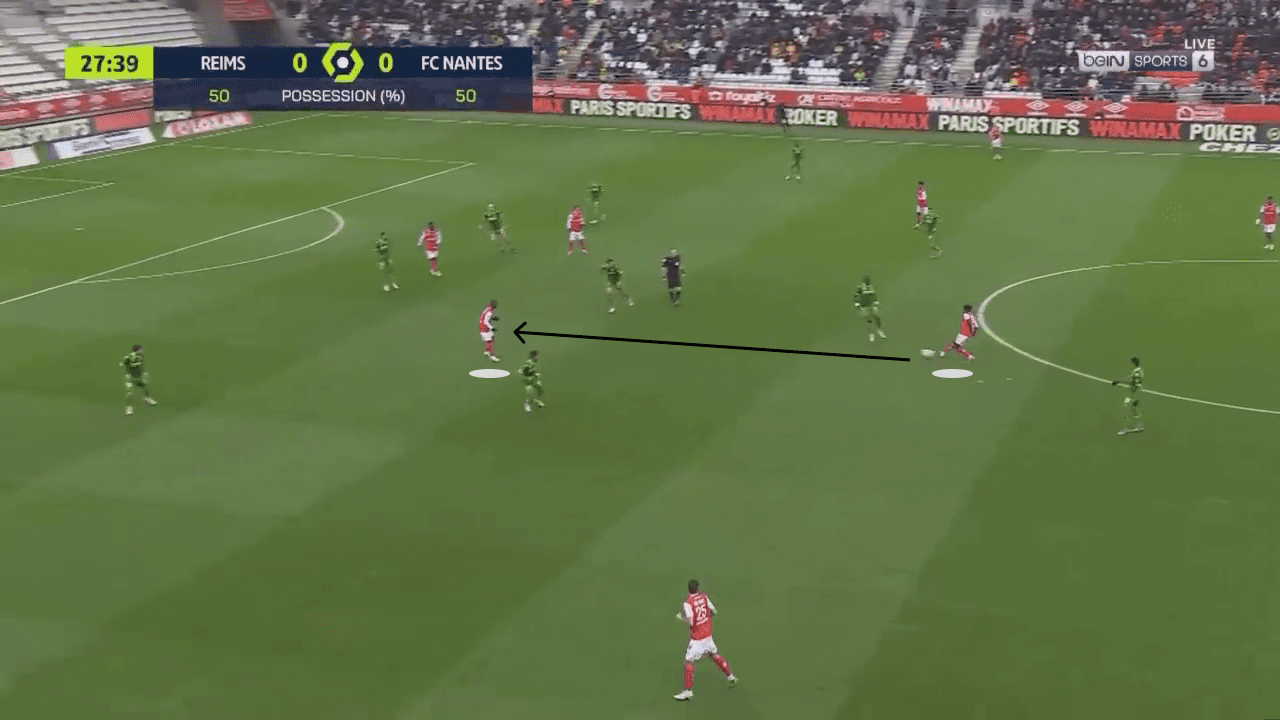
Now, the attacking midfielders in the middle look to operate in these spaces so they can penetrate through the centre. Still’s players are constantly moving around to try and generate options for their teammates and find space in dangerous positions. They always shuffle up their attacks in order to confuse the opponents and look to find a goalscoring opportunity.
Reims look to attempt more shots when in and around the box. They try to work the ball into valuable positions before taking their pop at goal. In fact, they’ve been taking more shots in front of the goal under Still. They frequently look to threaten the keeper.
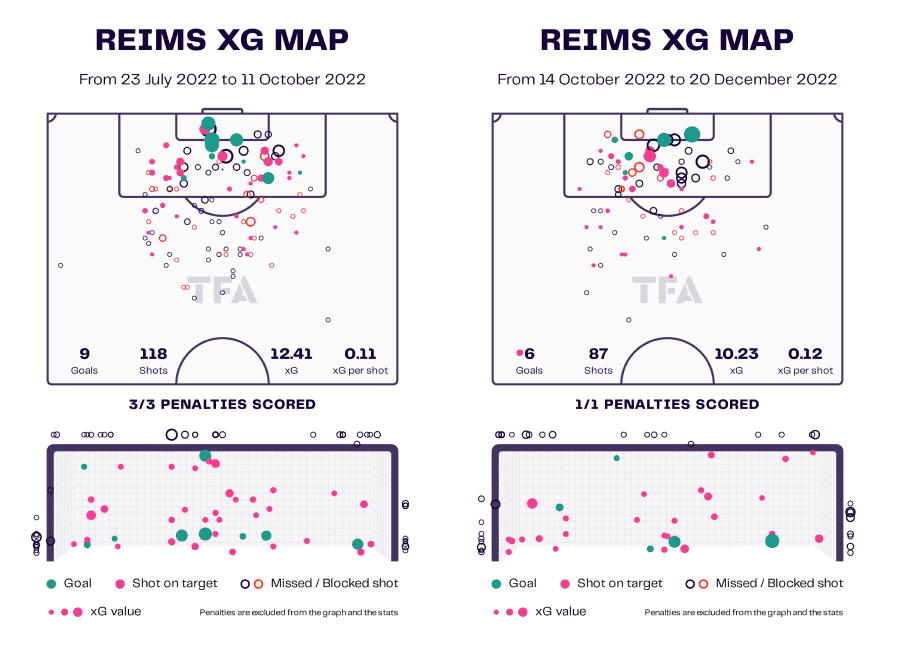
We can see Reims, post 14th October (the time period under Still), has attempted more shots on target from the centre and also have a slightly better xG per shot value than before. The success behind their recent tactics is that they’ve been able to generate plenty of goalscoring opportunities for themselves with more options in the front.
Out of possession
Committing a lot of players while attacking in the final third acts as an advantage during their to transition to defence. Upon losing possession, due to their numerical advantage, they look to crowd around the opponent ball possessor either trying to win the ball or to delay their attack.
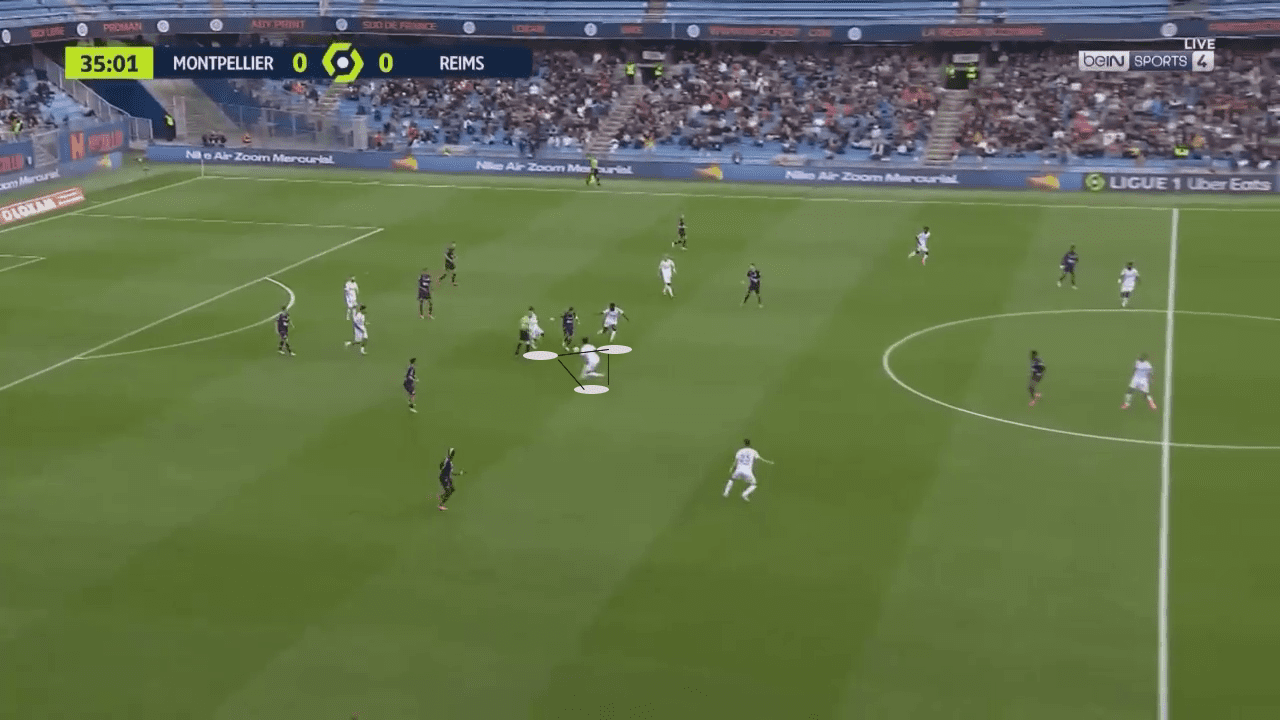
By doing so, they create time for the rest of their teammates to get back and organise themselves for the defensive phase of the game. They also make tactical fouls when required to slow down the opponent’s attack. The idea is to surround the player and cut down the passing lanes so that possessor feels pressurised and loses the ball.
If the opponents build from the back, they tend to get into a rotational 4-4-2 formation to press the opponents. It’s a less intense press.
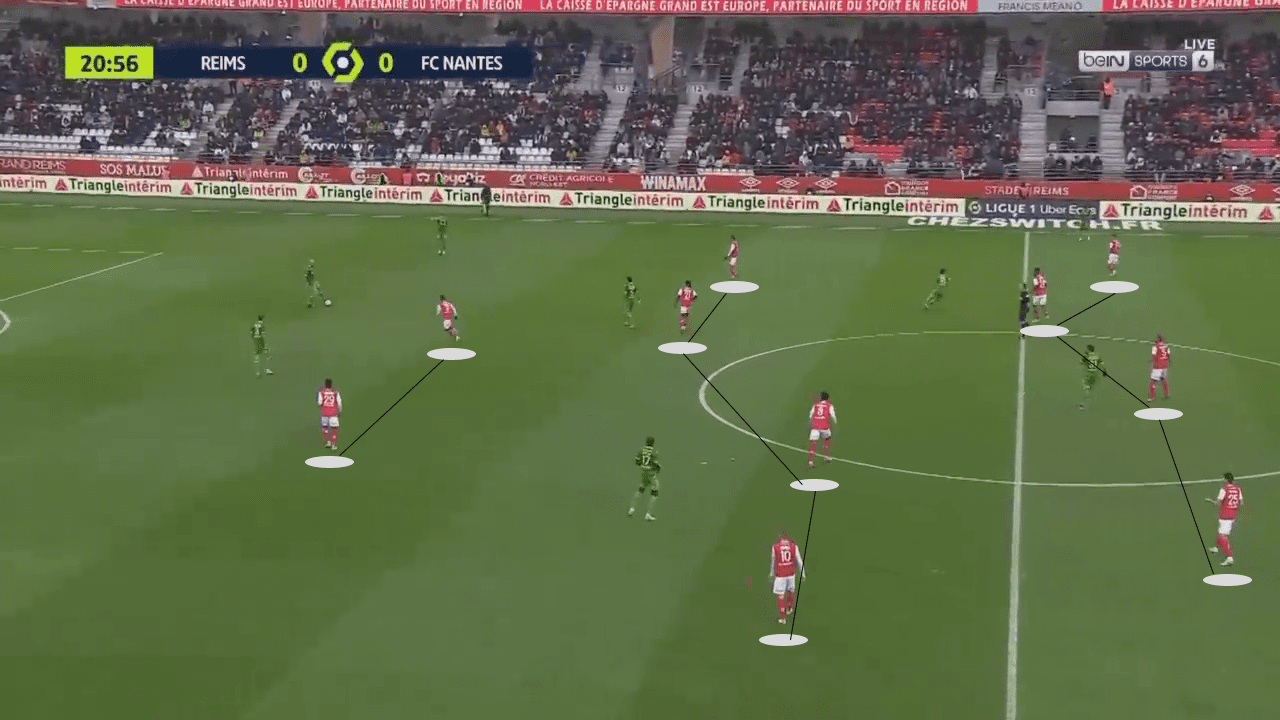
They aim to prevent the opponents from playing through the middle and force them to play through the flanks. Defending in a 4-4-2 structure makes it difficult for the opponents to penetrate through the flanks and as a result, they end up losing possession.
In the defending third, Reims prefer to stay in a compact 4-4-2, an advanced system of their earlier formation where they stay compact and give no room for the opponents to play in between the lines.
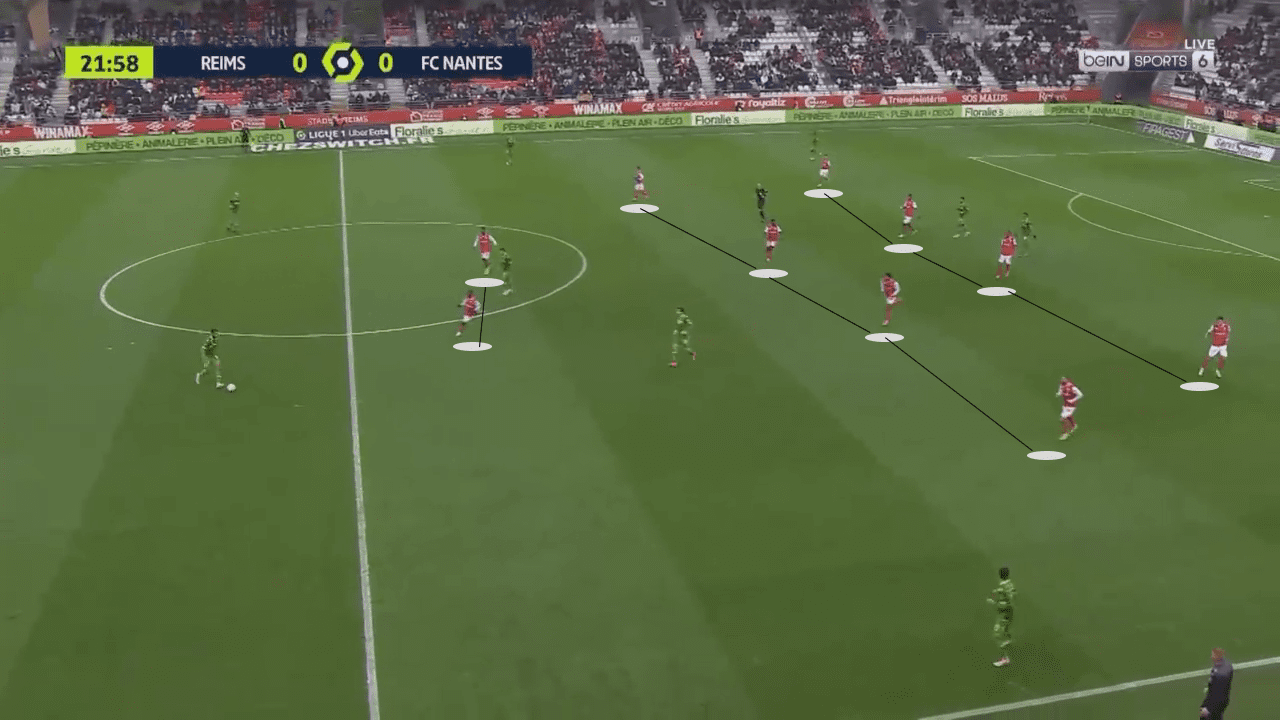
The two strikers upfront prevent the ball from being played to the pivot and hence force the centre-back to play it to the flank. They do not look to shake their shape and, hence, they don’t press the centre-back and force them to play the way they want. This system has been proven effective as they’ve only conceded two goals from their last five games.
Conclusion
Promoting William Still to the hot seat for the remainder of the 2022/23 campaign while also being willing to pay £22,000 per game as a fine for the rest of the season because he still doesn’t have the UEFA Pro coaching license that he needs to have for coaching in Ligue 1, shows how confident the management of Reims is of him.
In these first five games, the team has shown promising changes and Still has been able to implement his tactical decisions well in the game. Reims, who are currently positioned 11th in the table, could make significant progress under Still in 2023. Only time will tell how good and better the year is going to be for both the young manager and the club.

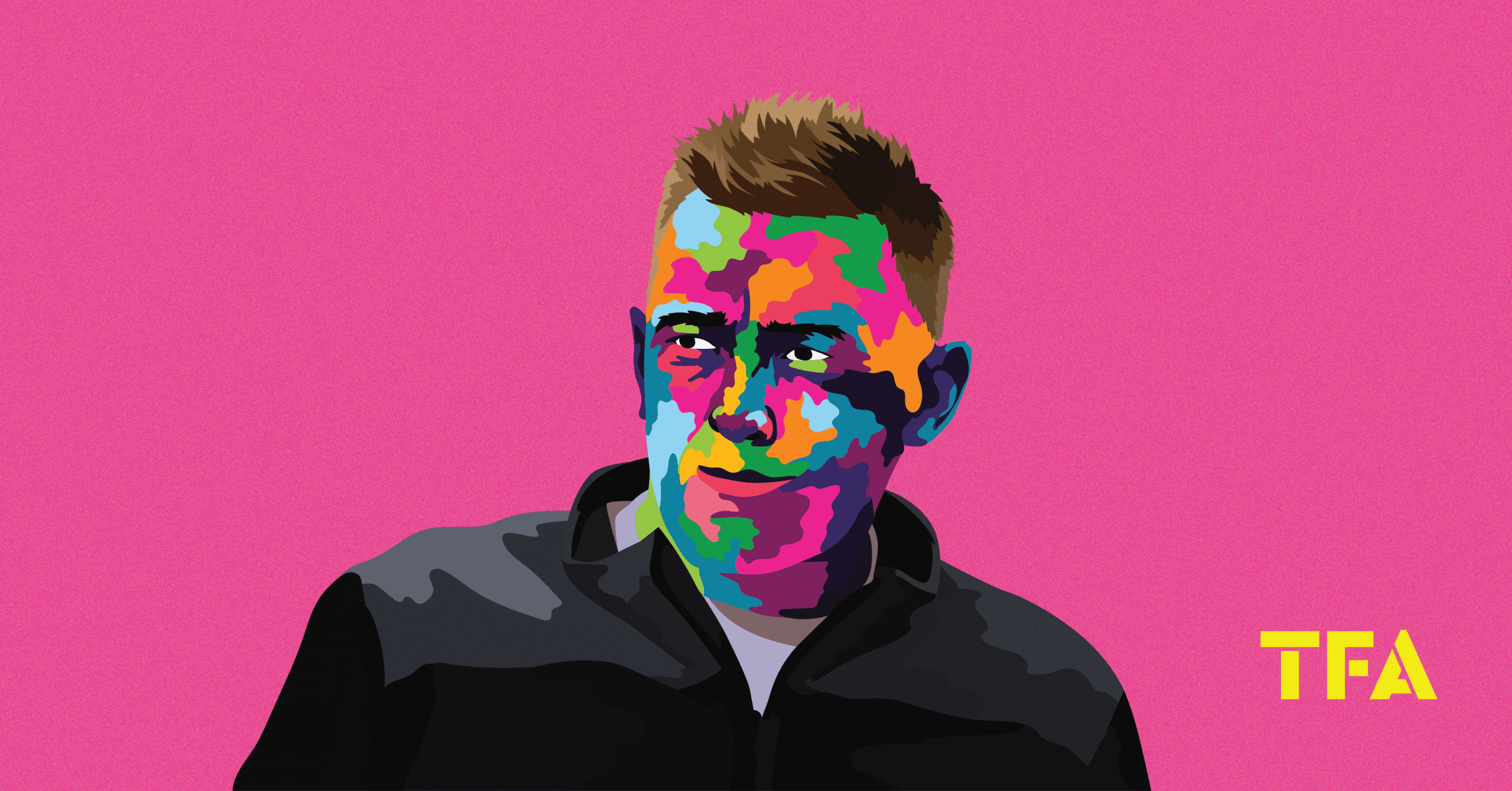



Comments